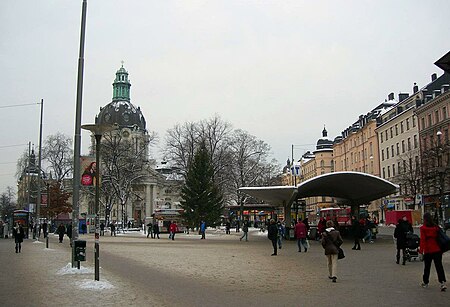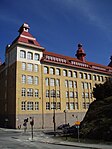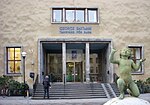The Stockholm Observatory (Swedish: Stockholms observatorium, 050) is an astronomical observatory and institution in Stockholm, Sweden, founded in the 18th century and today part of Stockholm University. In 1931, the new Stockholm Observatory (Swedish: Saltsjöbaden Observatory, 052), nicknamed "Saltis", was inaugurated on the Karlsbaderberget at Saltsjöbaden, near Stockholm, and operated until 2001.There are records of daily weather observations from the observatory going back to 1754.
The Stockholm Observatory site at Saltsjöbaden was established with a 40-inch (102 cm) reflecting telescope from Grubb, built in 1931. Also of historical interest is a double telescope by Grubb, the 24/20-inch refractor, with has one 24-inch aperture another 20-inch on the same mount established in 1931.The old observatory is in modern times a museum (Observatory Museum) and because it is on a hill is known for a good view of city of Stockholm from the dome, and it also has some sculptures and walled garden. The old observatory has many items from across the centuries, including a Repsold telescope, and a marble inlaid meridian line. Many old observatory instruments involved determining the location of stars, the local time, and data was recorded manually. In the late 19th century astrophotography became more common, and the Replsold refractor is known to have been used for making images, which had to be done with chemicals that reacted with light (not with modern electronic devices).










